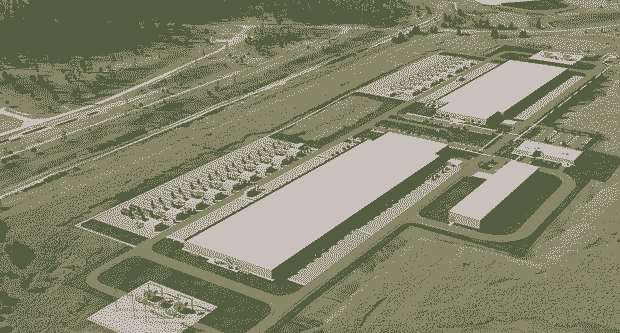Data centers serve as the backbone of modern enterprises, housing and managing vast amounts of digital information critical for operations. Effective data center management is paramount to ensure optimal performance, reliability, and security. In this comprehensive guide, we’ll explore key aspects of data center management, covering best practices, strategies, and emerging trends.
I. Introduction to Data Center Management
A. Definition and Significance
A data center is a centralized facility designed to house computer systems, servers, and networking equipment for the storage, processing, and management of data. In today’s digital era, where data is a valuable asset, managing data centers efficiently is crucial for the seamless functioning of businesses and organizations.
B. Importance of Effective Data Center Management
- Business Continuity: Data centers play a pivotal role in ensuring uninterrupted business operations. Effective management minimizes downtime and enhances business continuity, safeguarding against data loss or service disruptions.
- Resource Optimization: Efficient data center management maximizes resource utilization, including power, cooling, and physical space. This optimization is essential for cost-effectiveness and sustainability.
- Security and Compliance: Data centers store sensitive information, making security a top priority. Compliance with industry regulations and data protection standards is achieved through robust management practices.
II. Key Components of Data Center Management
A. Infrastructure Management
- Hardware Configuration and Monitoring:
- Regularly assess and update hardware configurations.
- Implement monitoring tools to track hardware health and performance.
- Conduct preventive maintenance to address potential issues before they impact operations.
- Power and Cooling Management:
- Optimize power distribution for energy efficiency.
- Implement cooling solutions to maintain an optimal temperature.
- Monitor power usage effectiveness (PUE) to gauge efficiency.
B. Virtualization and Cloud Integration
- Virtual Machine (VM) Management:
- Utilize virtualization to maximize server efficiency.
- Implement VM migration and load balancing for resource optimization.
- Regularly audit and decommission unused VMs.
- Cloud Integration:
- Embrace hybrid or multi-cloud strategies for scalability.
- Ensure seamless integration between on-premises and cloud environments.
- Monitor and manage cloud costs effectively.
C. Network Management
- Bandwidth Optimization:
- Monitor network traffic to identify and address bottlenecks.
- Implement load balancing for efficient resource distribution.
- Regularly review and upgrade network infrastructure.
- Security Protocols:
- Implement firewalls, intrusion detection systems, and encryption.
- Conduct regular security audits and vulnerability assessments.
- Enforce strict access controls and authentication measures.
D. Data Storage and Backup
- Storage Efficiency:
- Utilize tiered storage solutions for different data types.
- Implement data deduplication and compression techniques.
- Regularly audit and archive data to optimize storage space.
- Backup and Disaster Recovery:
- Establish regular backup schedules for critical data.
- Test and update disaster recovery plans.
- Ensure off-site storage for backup data to mitigate risks.
E. Environmental Monitoring
- Temperature and Humidity Control:
- Deploy sensors to monitor temperature and humidity levels.
- Implement automated alerts for out-of-range conditions.
- Design an effective layout for optimal airflow.
- Fire Detection and Suppression:
- Install fire detection systems with early warning capabilities.
- Implement fire suppression systems to mitigate risks.
- Regularly test and maintain fire safety equipment.
III. Best Practices in Data Center Management
A. Adopting a Proactive Approach
- Regular Audits and Assessments:
- Conduct routine infrastructure audits and assessments.
- Identify potential issues before they escalate.
- Develop a comprehensive inventory of hardware and software assets.
- Capacity Planning:
- Analyze historical data to forecast future capacity requirements.
- Plan for scalability and future expansion.
- Implement tools for real-time capacity monitoring.
B. Energy Efficiency and Sustainability
- Green Data Center Initiatives:
- Integrate energy-efficient hardware and cooling solutions.
- Explore renewable energy sources for power.
- Participate in industry initiatives for sustainable practices.
- Power Management Policies:
- Implement dynamic power management to adjust resource usage.
- Utilize energy-efficient components and systems.
- Consider the use of energy-efficient cooling technologies.
C. Automation and Orchestration
- Automated Workflows:
- Implement automation for routine tasks.
- Utilize orchestration tools for seamless integration.
- Reduce manual intervention for increased efficiency.
- DevOps Integration:
- Foster collaboration between development and operations teams.
- Implement continuous integration and continuous deployment (CI/CD) pipelines.
- Embrace a culture of automation and collaboration.
D. Security and Compliance
- Regular Security Audits:
- Conduct frequent security audits and vulnerability assessments.
- Stay updated on security patches and updates.
- Implement a robust incident response plan.
- Compliance Frameworks:
- Adhere to industry-specific compliance standards.
- Regularly review and update compliance frameworks.
- Document and track compliance measures.
E. Training and Skill Development
- Continuous Learning:
- Invest in training programs for data center staff.
- Stay abreast of emerging technologies and best practices.
- Encourage certifications to validate skills.
- Cross-Functional Training:
- Develop cross-functional skills among team members.
- Foster a culture of knowledge-sharing.
- Rotate team members across different roles for skill diversification.
IV. Emerging Trends in Data Center Management
A. Edge Computing
- Decentralized Processing:
- Distribute processing power closer to the point of data generation.
- Enhance real-time processing for low-latency applications.
- Optimize network traffic and reduce dependence on centralized data centers.
- Edge Security Measures:
- Implement security protocols at the edge.
- Address security concerns associated with distributed processing.
- Explore edge-native security solutions.
B. Artificial Intelligence (AI) and Machine Learning (ML)
- Predictive Analytics:
- Utilize AI and ML for predictive maintenance.
- Analyze historical data to forecast potential issues.
- Optimize resource allocation based on predictive analytics.
- Intelligent Automation:
- Implement intelligent automation for repetitive tasks.
- Use AI for anomaly detection and security monitoring.
- Enhance decision-making processes with machine learning algorithms.
C. Modular Data Centers
- Scalability and Flexibility:
- Embrace modular architectures for easy scalability.
- Optimize resource allocation with modular components.
- Streamline expansion and upgrades through modular design.
- Energy-Efficient Modular Solutions:
- Incorporate energy-efficient technologies in modular designs.
- Enable rapid deployment and efficient use of resources.
- Explore prefabricated modular data center solutions.
V. Conclusion
In conclusion, effective data center management is a multifaceted endeavor that encompasses various components, best practices, and emerging trends. The continuous evolution of technology necessitates a proactive approach, where organizations must prioritize efficiency, security, and sustainability.
By adopting best practices such as regular audits, energy efficiency initiatives, automation, and robust security measures, data center managers can ensure the optimal performance of their infrastructure. Additionally, staying informed about emerging trends like edge computing, AI, and modular architectures enables organizations to future-proof their data center management strategies.
In a rapidly changing technological landscape, the successful management of data centers requires a commitment to continuous learning, adaptability, and a strategic vision that aligns with the organization’s overall objectives. As organizations navigate the complexities of data center management, a holistic and forward-thinking approach will be instrumental in harnessing the full potential of these critical hubs of digital activity.



